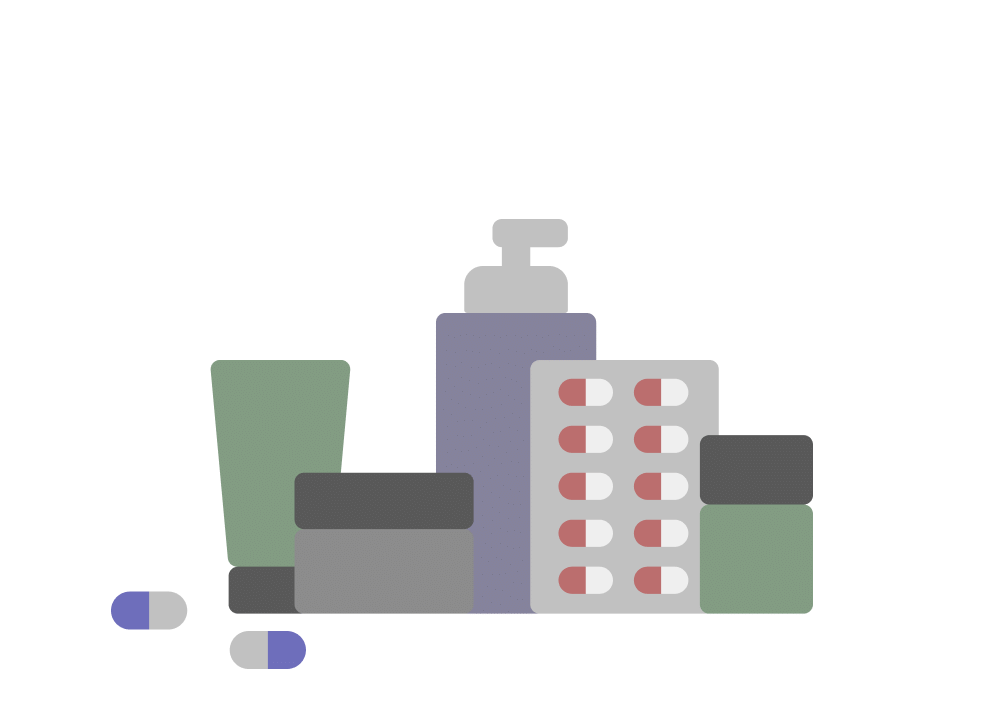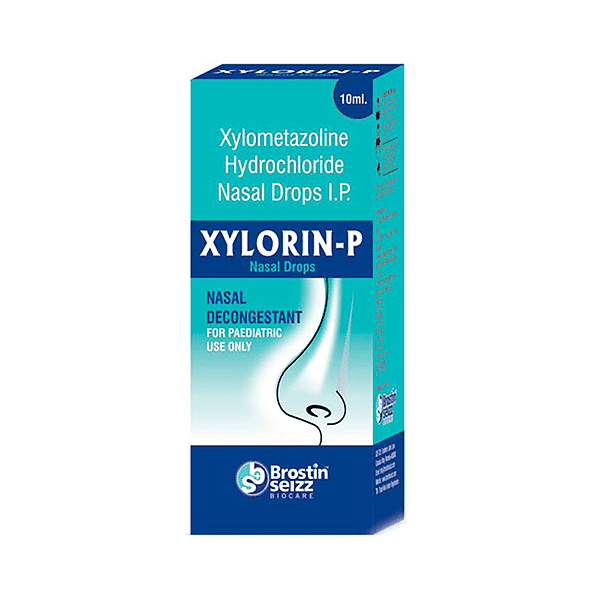
Xyline Kid Nasal Drops
Manufacturer
Vintek Pharmaceuticals
Salt Composition
Xylometazoline (0.05% w/v)
Key Information
Short Description
Xyline Kid Nasal Drops is a medicine that helps clear and soothes the blocked nose, thereby relieving nasal congestion due to common cold, hay fever, or other respiratory allergies in children.
Dosage Form
Nasal Drops
Introduction
Xyline Kid Nasal Drops is a nasal decongestant that helps in opening up the nasal passages by reducing excessive nasal secretions and also reducing the swelling in the blood vessels in the inner surface of the nose. This provides temporary relief from congestion or stuffiness in the nose.
Directions for Use
Do check the medicine's 'expiry' date before using it. Do not give more than the recommended dose as it can lead to side effects. Do not use it more than 3 times a day. Prolonged use and abrupt stoppage of Xyline Kid Nasal Drops can lead to complications. Follow the doctor's prescription carefully. One container of Xyline Kid Nasal Drops should only be used only by one person. This is to avoid spreading infection from one person to another. Encourage your child to inhale the steam as it may help relieve symptoms.
Safety Information
Side Effects
No common side effects listed.
Interacting Medicines
Acyclovir Famciclovir Furazolidone Ganciclovir
How it works
Xyline Kid Nasal Drops is a nasal decongestant. It helps in opening up the nasal passages by reducing excessive nasal secretions and also reducing the swelling in the blood vessels in the inner surface of the nose. This provides temporary relief from congestion or stuffiness in the nose.
Quick Tips
Do check the medicine's 'expiry' date before using it. Do not give more than the recommended dose as it can lead to side effects. Do not use it more than 3 times a day. Prolonged use and abrupt stoppage of Xyline Kid Nasal Drops can lead to complications. Follow the doctor's prescription carefully. One container of Xyline Kid Nasal Drops should only be used only by one person. This is to avoid spreading infection from one person to another. Encourage your child to inhale the steam as it may help relieve symptoms.
Related Medicines

Xylorin P 0.05% Nasal Drops

Otrilom P 0.05% Nasal Drops

Karnose Kid Nasal Drops

Nasotrac Kid 0.05% Nasal Drops

Optocold P 0.05% Nasal Drops

Noltop Kid 0.05% Nasal Drops

Nasy P 0.05% Nasal Drops

Noblock P 0.05% Nasal Drops

Nasovol X 0.05% Nasal Drops

Sinoryl Pead 0.05% Nasal Drops
Frequently asked questions
Can I give Xyline Kid Nasal Drops to my child continuously for more than 2 weeks if he has on and off nasal congestion?
Do not administer Xyline Kid Nasal Drops for more than 10 consecutive days as it may lead to complications such as "atrophic rhinitis". It is also important not to abruptly stop the medication, as this could cause ‘rebound congestion’ in your child. Please adhere to the prescribed dosing schedule.
What if I give too much of Xyline Kid Nasal Drops to my child by mistake?
An overdose of Xyline Kid Nasal Drops can lead to severe dizziness, perspiration, a drop in body temperature, headache, bradycardia (slow heart rate), hypertension, respiratory depression, coma, and convulsions. It may also trigger high blood pressure followed by a drop in blood pressure. Children are more sensitive to toxicity than adults, so it is crucial that you contact your child's doctor immediately if this occurs.
How to use Xyline Kid Nasal Drops in my child?
Before administering Xyline Kid Nasal Drops, ask your child to clear their nose by blowing gently. Have them lie down and tilt their head back as far as comfortably possible, or if they are lying on a bed, keep the head over the side. Open the cap of the medicine container and without touching the nozzle to the nose, apply the medication into each nostril. Keep the child's head tilted back for a short period to allow the drops to spread throughout the nose. Replace the cap immediately after use. If the drop completely misses the nose, administer it again; if any part of the drop gets into the nose, do not administer it again. Repeat for the other nostril. Clean and dry the nozzle before replacing the cap immediately after use. To avoid potential infection spread, only one person should use this bottle.
When should I call my child’s doctor right away?
Call your child's doctor immediately if they experience any signs such as insomnia, dizziness, tremor, irregular heartbeat, or elevated blood pressure after using Xyline Kid Nasal Drops.
Can other medicines be given at the same time as Xyline Kid Nasal Drops?
Xyline Kid Nasal Drops can sometimes interact with other medicines or substances. It is important to discuss any other medications your child is taking before starting Xyline Kid Nasal Drops, and always consult your child's doctor for guidance on medication administration.
In what position should I make my child sleep when he is having a stuffy nose?
For the best symptom relief while sleeping with a stuffy nose, have your child lie on their back with a pillow to help mucus drain out. Avoid sleeping on the side, as this might increase congestion in one or both nostrils.


